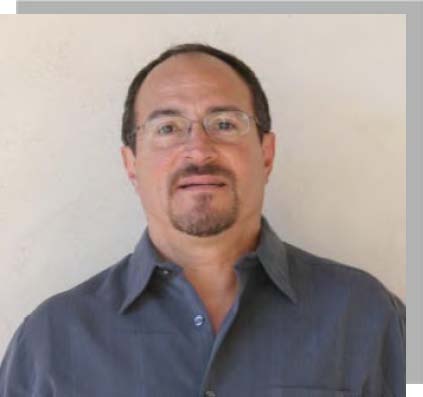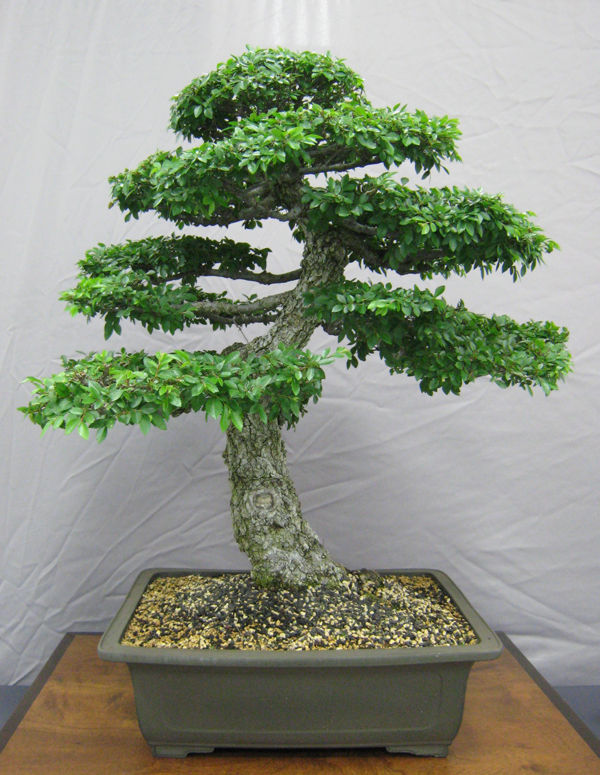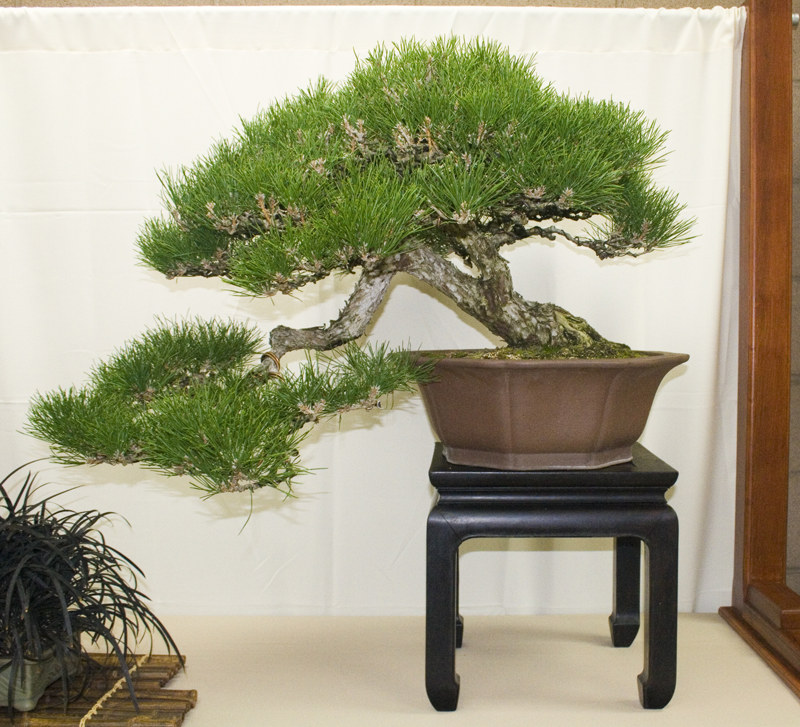March 2009 Newsletter
President’s Message
Let’s Keep the Buzz Going
By Ken Fuentes
|
The February meeting was fantastic. There was a buzz in the room, and I thank all the people who helped other members with their trees.
I think this meeting should be a model for all future workshops. Members brought in enough trees to keep everybody busy for the meeting. It was a great opportunity to see different styles being worked on and in many cases total transformations in one workshop.
Let’s keep up the pace and continue to bring in several trees for each workshop. Once a design is chosen, it can be worked on for the next month where it will be ready for round two.
We need to start refining our trees so that they are ready for our annual bonsai exhibition and demonstrations in October at the Gardens of the World in Thousand Oaks.
For the next two meetings, we will have demonstrations. In March, we will host Kathy Benson, who says she began her 30 years in bonsai by seeing a picture of an azalea in a book and thinking, “Gee, that is the kind of houseplant I would like to have.” She is a past president of the Descanso Bonsai Society.
Kathy’s demonstrations are always top-notch, and I hope everyone will be there.
Pacific Rim Bonsai Collection
Weyerhaeuser Mothballs Exhibition
By David E. Whiteside
Weyerhaeuser Corp. has announced that effective April 2 it will close its world-class Pacific Rim Bonsai Collection indefinitely due to economic conditions. David De Groot will remain as curator to maintain the collection of about 60 trees. De Groot is a well known bonsai expert and author.
The collection, which is on the company’s campus in Federal Way, Wash., was established in 1989 as part of Washington state’s centennial celebration.
“We regret having to take this action, knowing that the collection is highly regarded,” Ernesta Ballard, senior vice president, Corporate Affairs, said in a press release. “We’ll determine the future status of the collection when the economy recovers.”
In a message to American Bonsai Society President Pauline Muth, De Groot urged bonsai fans to send expressions of support for the collection to his manager, Rullie Harris at rullie.harris@weyerhaeuser.com.
Bonsai-A-Thon XIII
Exhibits, Demonstrations, Workshops, Garden Tours Highlight Big Fundraiser at the Huntington
By David E.Whiteside
When Conejo Valley Bonsai Society members joined hundreds of other bonsai enthusiasts and newcomers at the Golden State Bonsai Federation’s 13th Annual Bonsai-A-Thon, we found plenty of horticultural eye candy: beautiful bonsai, gorgeous landscape trees in both the Chinese and Japanese gardens, and the Huntington’s spanking-new bonsai court.
Last year, Bonsai-A-Thon attendees were able to take the first public tour of the Huntington Library, Art Collections, and Botanical Gardens’ then-new Chinese garden—plus we got an extra treat, a sneak preview of the expansion of the Huntington’s bonsai court. This year, we were able to revisit the Chinese garden and see all the progress there. And then Huntington Gardens Director Jim Folsom took us on the first public tour of the now-more-presentable new bonsai court. Most important, now there are bonsai on display.
But there’s more to a Bonsai-A-Thon. Demonstrations of bonsai horticulture and techniques are one of the most important activities at the annual event. Perhaps even more significant are the beginners workshops, where newcomers gain hands-on experience with bonsai basics under the tutelage of advanced practitioners. It is very gratifying to see broadly smiling beginners carrying their newly created bonsai homeward.
But wait, there’s more! There are many fine bonsai of many species, styles, and sizes on display, most of them created by some of Southern California’s finest bonsai artists. There’s also the opportunity to rub elbows with—and learn from—many of those luminaries. This year, for example, legendary bonsai master Harry Hirao was much in evidence. Mr. Hirao is famed for, among other things, elevating the California juniper (Juniperus californica) to its current status as a staple bonsai material. One of his exquisite California juniper creations was on display throughout this year’s event.

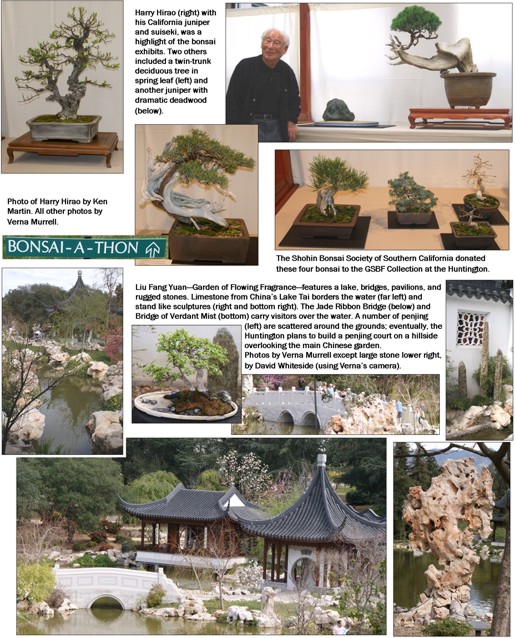
New Bonsai Court
Huntington Expands Bonsai Display Area
By David E.Whiteside
The new bonsai court at the Huntington Library, Art Collections, and Botanical Gardens combines elements of Japanese garden design and bonsai display concepts. As is customary, the garden elements include stone, water, and mostly evergreen plants with an occasional splash of color. A stream originates in one corner as a small waterfall, meanders under a couple of bridges, and then exits on the opposite side.
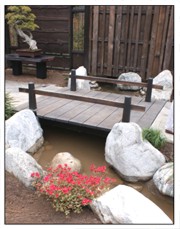 The wood fence that surrounds the garden provides the privacy and visual framing that is necessary for small Japanese gardens while also acting as a backdrop for the bonsai on display. The spaced, alternating plank design of the fence is a bit busy for a backdrop, but there are several large, tokonoma-like elements at intervals that provide a better setting. The bonsai are displayed on thick, custom-cut planks that, like the fence, have been burned to seal the wood. The Huntington bought an entire tree for this purpose; much of what remains of that tree can be seen in its rough-cut form behind the scenes.
The wood fence that surrounds the garden provides the privacy and visual framing that is necessary for small Japanese gardens while also acting as a backdrop for the bonsai on display. The spaced, alternating plank design of the fence is a bit busy for a backdrop, but there are several large, tokonoma-like elements at intervals that provide a better setting. The bonsai are displayed on thick, custom-cut planks that, like the fence, have been burned to seal the wood. The Huntington bought an entire tree for this purpose; much of what remains of that tree can be seen in its rough-cut form behind the scenes.
One major element of the new bonsai courtyard has yet to be built, but the general design concept has been developed: a display area for shohin bonsai. The artist’s concept was on display during the Bonsai-A-Thon’s guided tour of the new bonsai court.
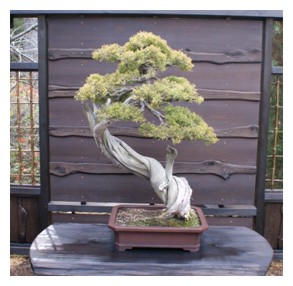 In addition to the new court, Bonsai-A-Thon tours also took in the nursery and bonsai work area, where we were able to see many trees in the Golden State Bonsai Federation’s Collection at the Huntington. One especially interesting one is a huge collected California juniper (Juniperus californica) designed and styled by Harry Hirao over several years. During the GSBF Convention last fall, attendees could observe Mr. Hirao and a team of volunteers fine-tuning the design. Once it goes into its custom-made pot, also visible in the bonsai work area, this tree will become part of the permanent collection at the Huntington.
In addition to the new court, Bonsai-A-Thon tours also took in the nursery and bonsai work area, where we were able to see many trees in the Golden State Bonsai Federation’s Collection at the Huntington. One especially interesting one is a huge collected California juniper (Juniperus californica) designed and styled by Harry Hirao over several years. During the GSBF Convention last fall, attendees could observe Mr. Hirao and a team of volunteers fine-tuning the design. Once it goes into its custom-made pot, also visible in the bonsai work area, this tree will become part of the permanent collection at the Huntington.
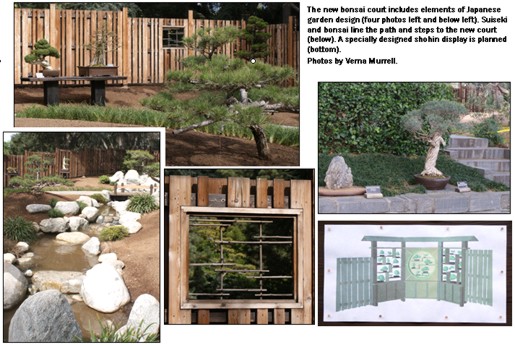
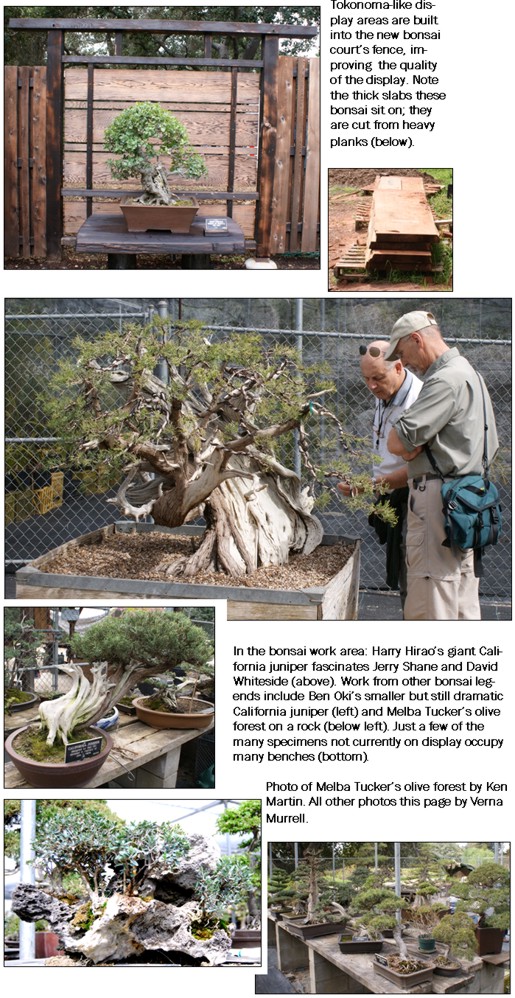
Barrett’s Bonsai Tips
Time To Start Spring Fertilizing
By Jim Barrett
|
A word about transplanting wisteria after blooms are gone. If you plan to do this, don’t fertilize for at least one month after re-potting. If you have wisteria and do not plan to re-pot, fertilize right after the blooms are gone. It is said that wisteria require three to four times as much fertilizer as most bonsai. Just make sure the fertilizer you use is slow release.
Fertilize quince, ume, crabapple, and pomegranate this month. Do not fertilize satsuki azaleas until blooms are gone. Re-potting can still be done on black pines, junipers, pomegranates, and azaleas. If you plan to re-pot azaleas, you can still trim fairly severely.
Most deciduous trees should be in full leaf by now, so wait until the new growth has hardened if you plan to re-pot maples, elms, hornbeams, and zelkovas.
We have had reports of wooly aphids appearing on apple, quince, and other plants attractive to aphids. Malathion with a little Volck Oil mixed in should do the trick. The oil allows the malathion to stick and penetrate the white fuzz covering the little critter. Spray again in about ten days. This treatment will also take care of regular aphids and spider mites.
Start getting rid of moss growing on trunks and base roots. Be careful not to damage rough bark trees such as black pine and cork-bark elm.


